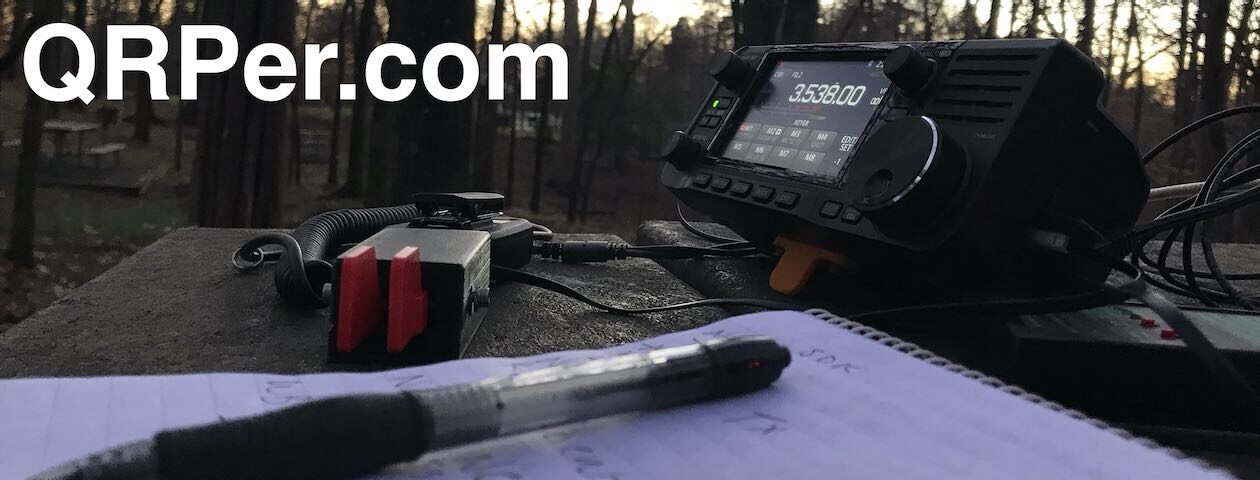A couple weeks ago, I was browsing the classifieds at QTH.com and saw a WTB (Want To Buy) ad for the Xiegu X6100. Without giving it a lot of through, I contacted the ham who posted the note and gave him a fair deal on my X6100.
As I mentioned in my last field report with the X6100, this unit was actually very new. The first X6100 I used was a loaner from Radiodity, the second I purchased and discovered it had a little mechanical issue with the encoder–it was returned–and the third was this unit which I received in April 2022. It had only been on one activation.
Why did I sell the X6100?
 I had some fun with the X6100 on a few very successful activations in the field and made numerous contacts with the X6100 at home. Why would I sell it?
I had some fun with the X6100 on a few very successful activations in the field and made numerous contacts with the X6100 at home. Why would I sell it?
The biggest reason is since I already own the Xiegu X5105–and personally preferred it over the X6100–I simply wasn’t using the X6100 a lot.
Specifically:
- The X5105 will run about 2 to 3 times longer than the X6100 on a fully-charged internal battery.
- The X5105 isn’t as prone to front-end overload
- The X5105’s audio is marginally better than that of the X6100 in CW mode. (To be clear, though, neither radio has great audio.)
I’d planned to build a little BCI filter for my X6100, to mitigate the overloading, but at the end of the day, I found I just wasn’t reaching for the rig when heading out the door.
If I were primarily a digital mode operator, I think I would have kept the X6100. It’s a pretty easy radio to use and set up for digital modes.
Final X6100 thoughts
 As I pointed out in my X6100 review, the radio is a bit of a “mixed bag.” It also seems to be a polarizing radio out there in ham radio community: some love it, some hate it.
As I pointed out in my X6100 review, the radio is a bit of a “mixed bag.” It also seems to be a polarizing radio out there in ham radio community: some love it, some hate it.
Me personally? It just wasn’t my cup of tea.
That said, it is a very interesting radio platform and I am very curious if others will develop a Linux-based operating system that might allow for things like native digital mode operation.
G106 Incoming
Mike (K8MRD) has sent me the latest Xiegu G106 unit he reviewed over on his YouTube channel. I should receive it in a few days.
Josh, over at the Ham Radio Crash Course channel, also recently reviewed the G106.
Check out both of these reviews.
The take-away is that it’s really not a great radio, but it is very cheap. In fact, Mike was very vocal about how much he disliked the first G106 unit he received.
After seeing Mike and Josh’s reviews, I contacted Radioddity and told them to skip me in the review process. Frankly, reviews and field tests take time, and I don’t have a lot of that particular resource to waste.
Radioddity encouraged me to reconsider because new firmware promised to fix many of the issues noted in previous reviews. Indeed, they told me that the first thing I’ll need to do to the unit I receive is update the firmware.
I decided that what I’ll do is take the G106 to the field and do a couple of real-time, real-life activations with it. We’ll explore its performance together and see if it’s worth the $320 price.
Being completely transparent here, I’m biased towards paying more to get a better quality radio. I’m not so sure how well the G106 and I will get along, but I’ll give it a good ole college try.
Of course, I’ll give the G106 a heavy workout in CW mode. Maybe I’ll eat my words, but I’ve no intention of adding the G106 to my radio collection; I do want to give it a fair shake-out in the field though. Very curious if it’ll have any issues with front-end overloading.
Stay tuned!
































